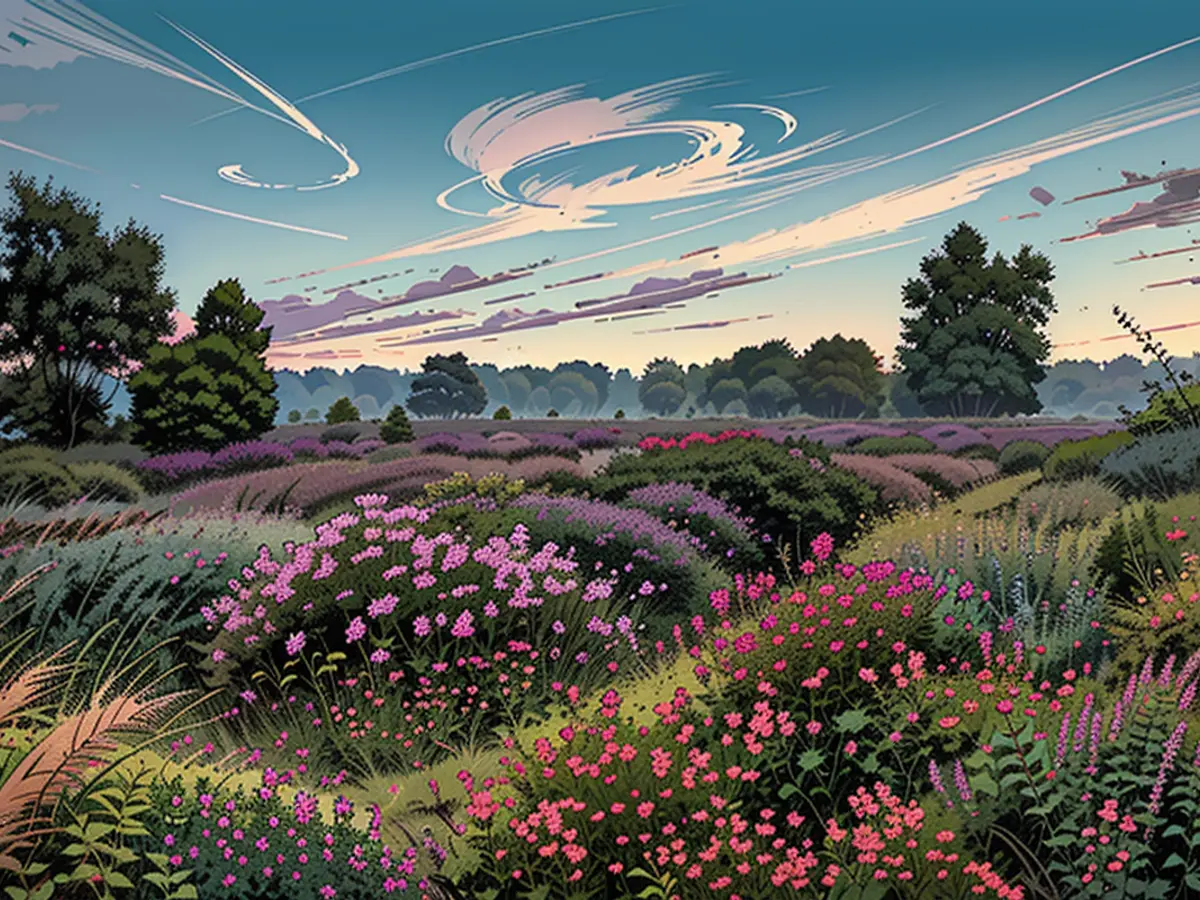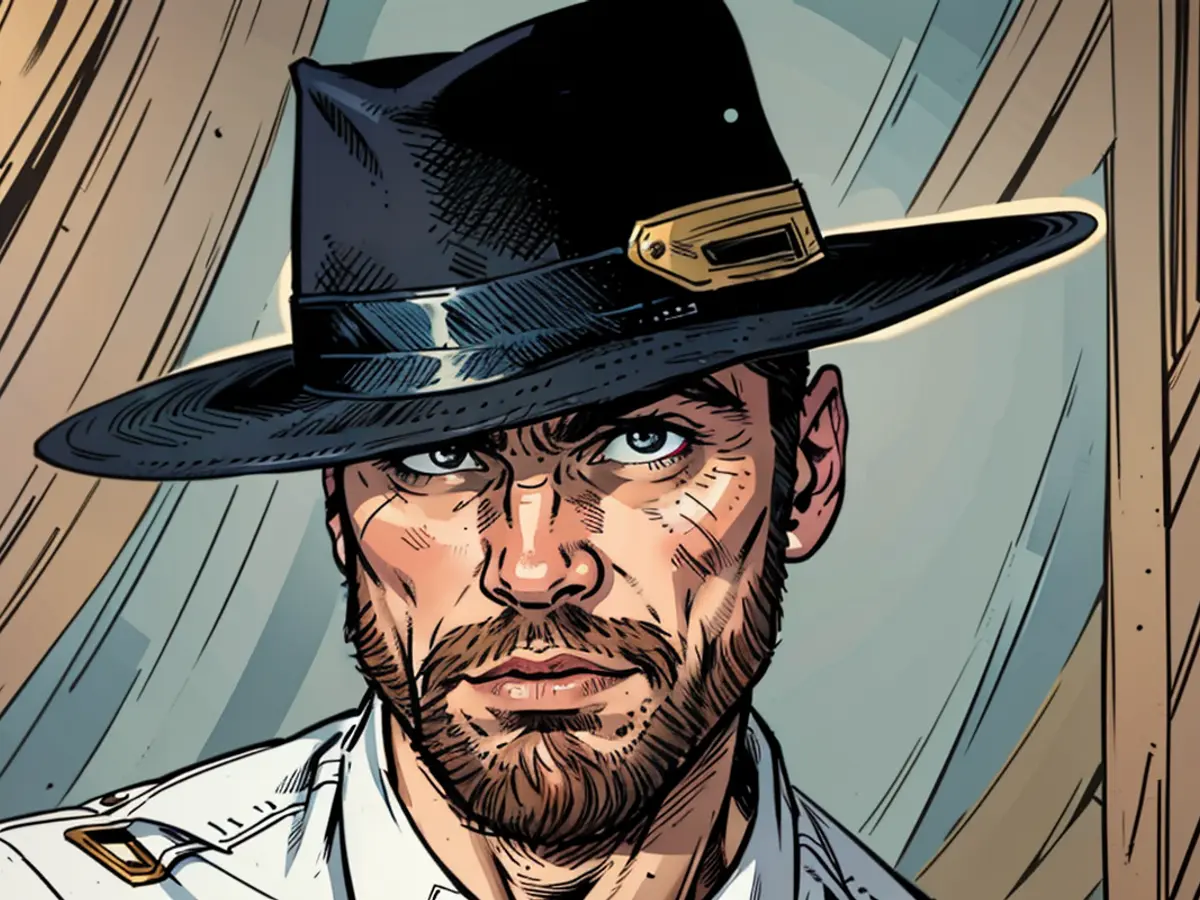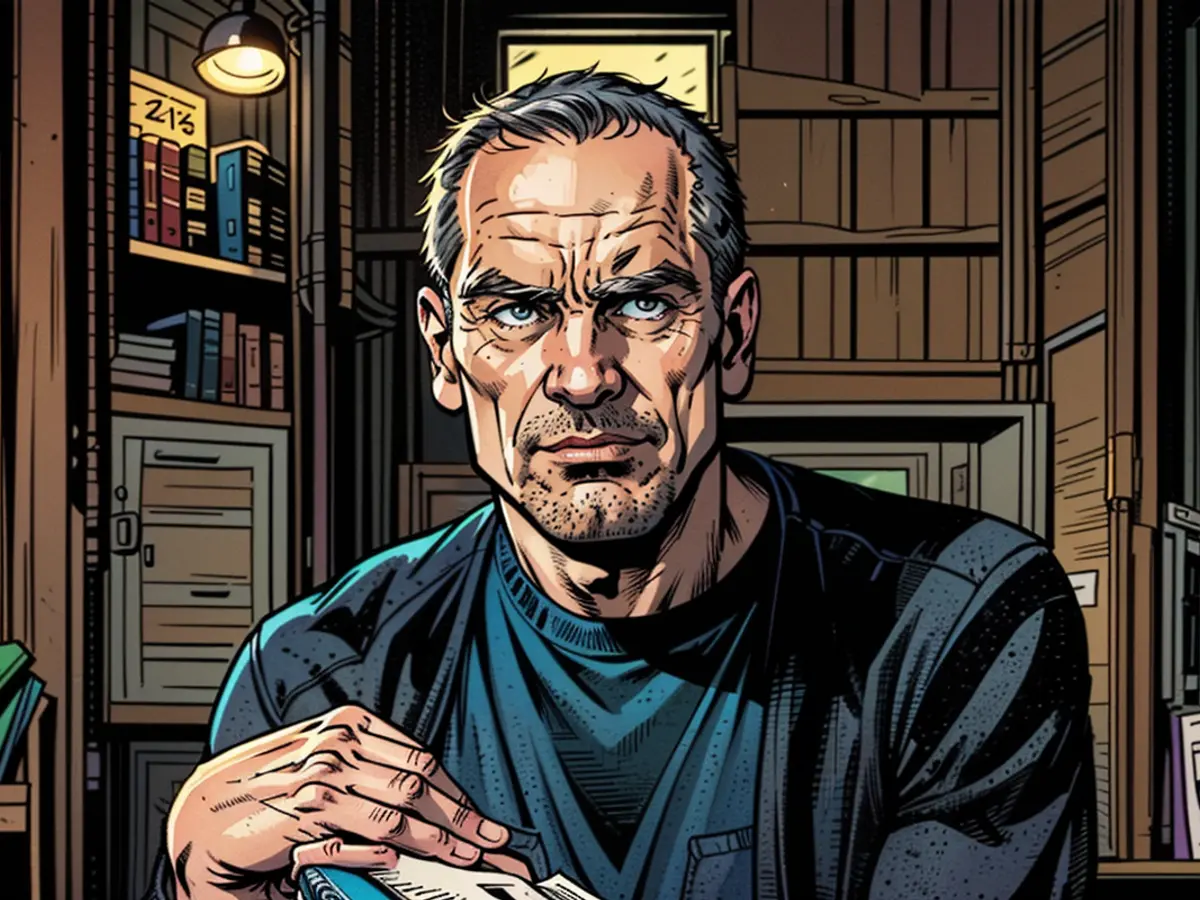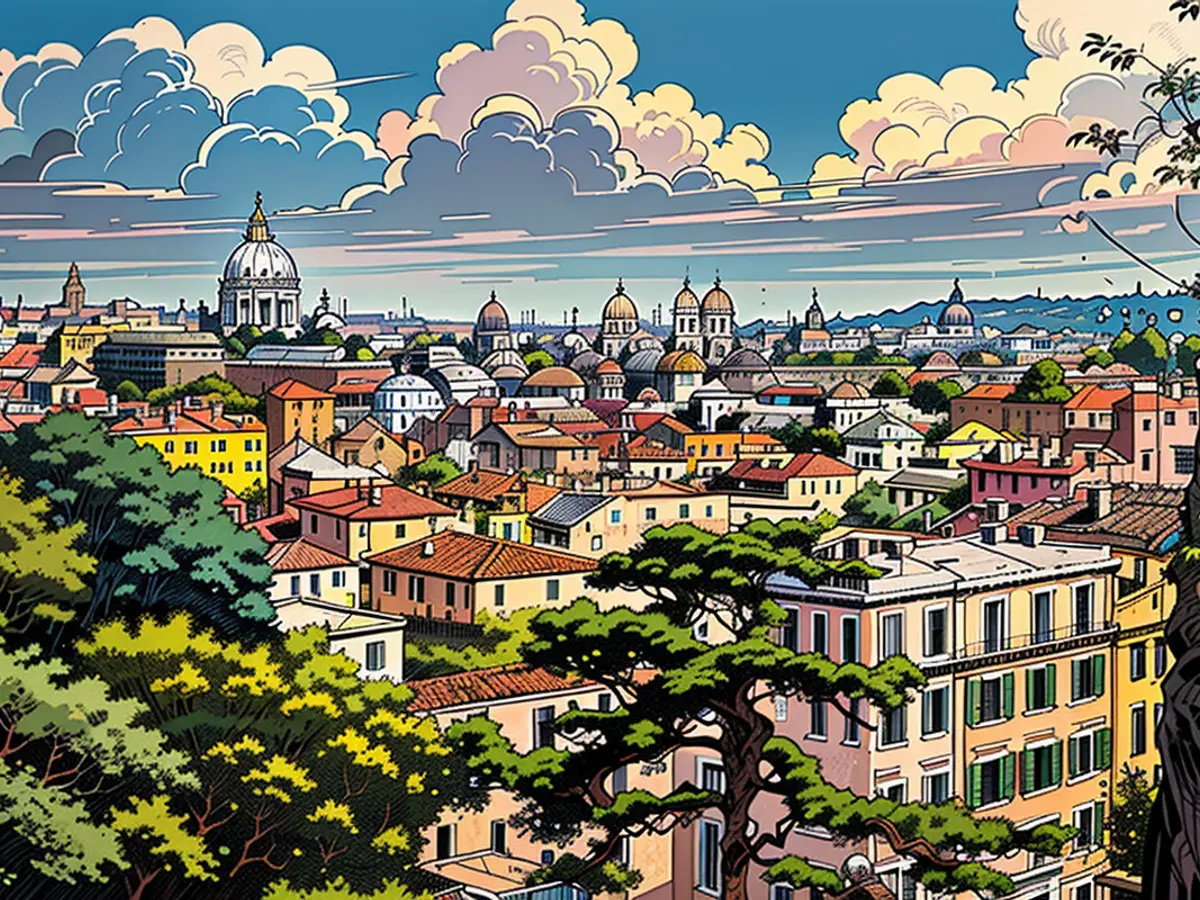Franquin - the master of chaos
He turned "Spirou" into a comic classic, invented Gaston and the Marsupilami. And he got even with humanity in "Black Thoughts". Franquin, one of Europe's most important comic artists, was born 100 years ago.
That hair! Left, right, above, below: hair everywhere. They stick out, sprawl, swirl, are indomitable, untamable. And they are a trademark of André Franquin. For the Belgian comic artist's characters, every day is a "bad hair day". But that doesn't bother them, because they are actually the least of their problems. The hair is just an expression of the disorder that reigns around them and which they are desperately trying to master.
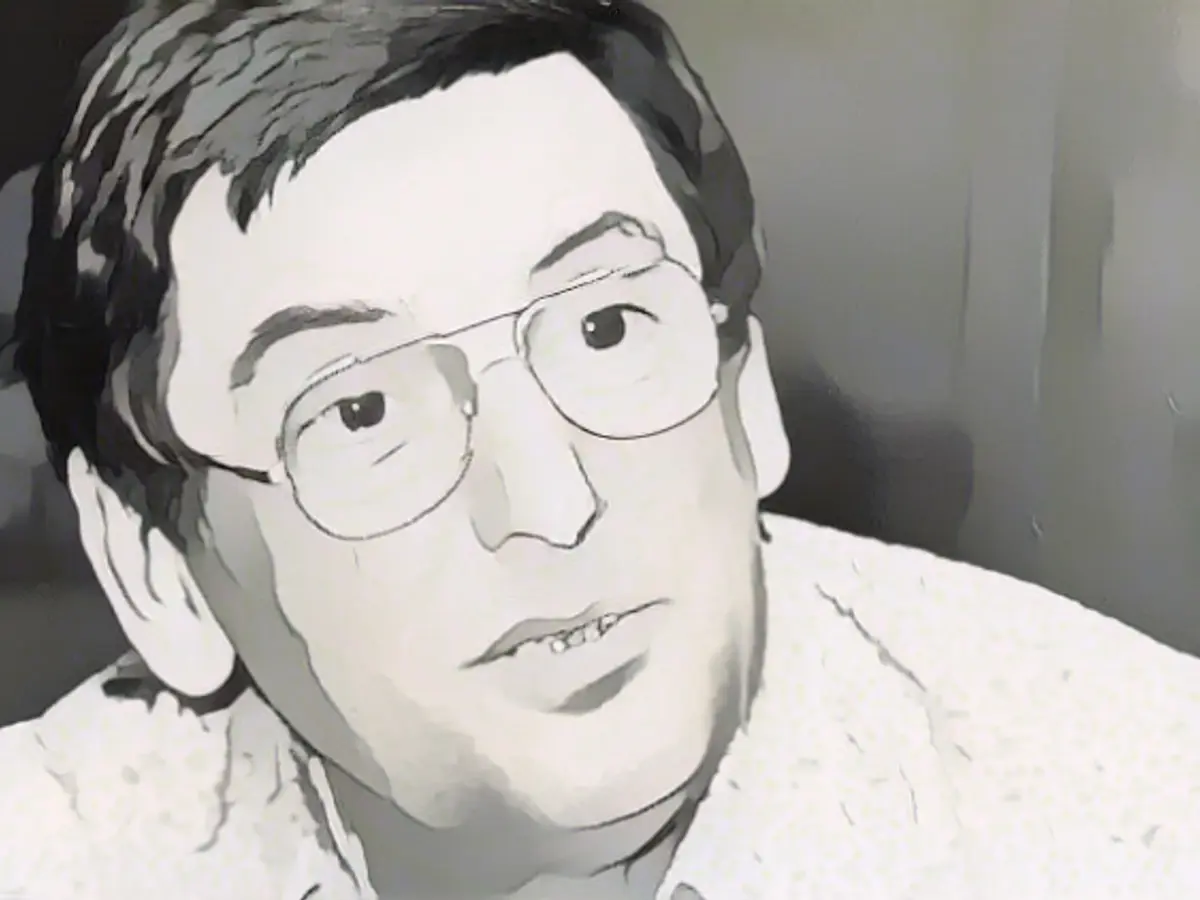
Chaos - that is the comic world of Franquin, who was born 100 years ago, on January 3, 1924. Whether with "Spirou and Fantasio", "Gaston" or the jungle world of the Marsupilami, Franquin's heroes and(too rarely) heroines are constantly trying to sort out the disorder of the world, to organize the confusion, to untangle the tangle. A Sisyphean task.
Franquin's comics are colorful, rich in detail, uproariously funny and anarchic. And they have shaped the style of entire generations of illustrators. This is why the Belgian is one of the pillar saints of European comics, comparable only to "Tintin" creator Hergé or Asterix creators René Goscinny and Albert Uderzo.
Creator of an entire universe

Franquin's importance is particularly clear in contrast to Hergé. His style, the ligne claire (clear line), stands for clear outlines of the figures, simplified areas of color and often a lack of shading - which makes the figures appear two-dimensional and the drawings abstract or simplified. Franquin is completely different: his figures are bursting with dynamism, their legs and arms seem to be made of rubber, the figures often appear lanky. The pictures are bursting with detail, with lines that emphasize the movements, and the colouring is more vivid. Hergé's uncluttered style is contrasted with pure dynamism. "How can you compare us? Franquin is a great artist next to whom I am only a poor draughtsman," Hergé once said a little too modestly.
Franquin developed this style of the École Marcinelle (Marcinelle School) - named after the district of Charleroi where the Dupuis publishing house is still based today - to mastery, together with colleagues such as Jijé ("Jerry Spring"), Peyo ("The Smurfs") or Morris ("Lucky Luke"), who was almost the same age. He also took over the "Spirou and Fantasio" series from the former in 1946 and turned it into one of the most important comic series in Europe by writing long, complex stories from the 1950s onwards, which were first published in "Spirou" magazine and then also as albums. He also created the universe in which the title heroes are still to be found today, with secondary characters such as the Count of Rummelsdorf, the reporter Steffanie and the Cyclotrope, who strives for world power.
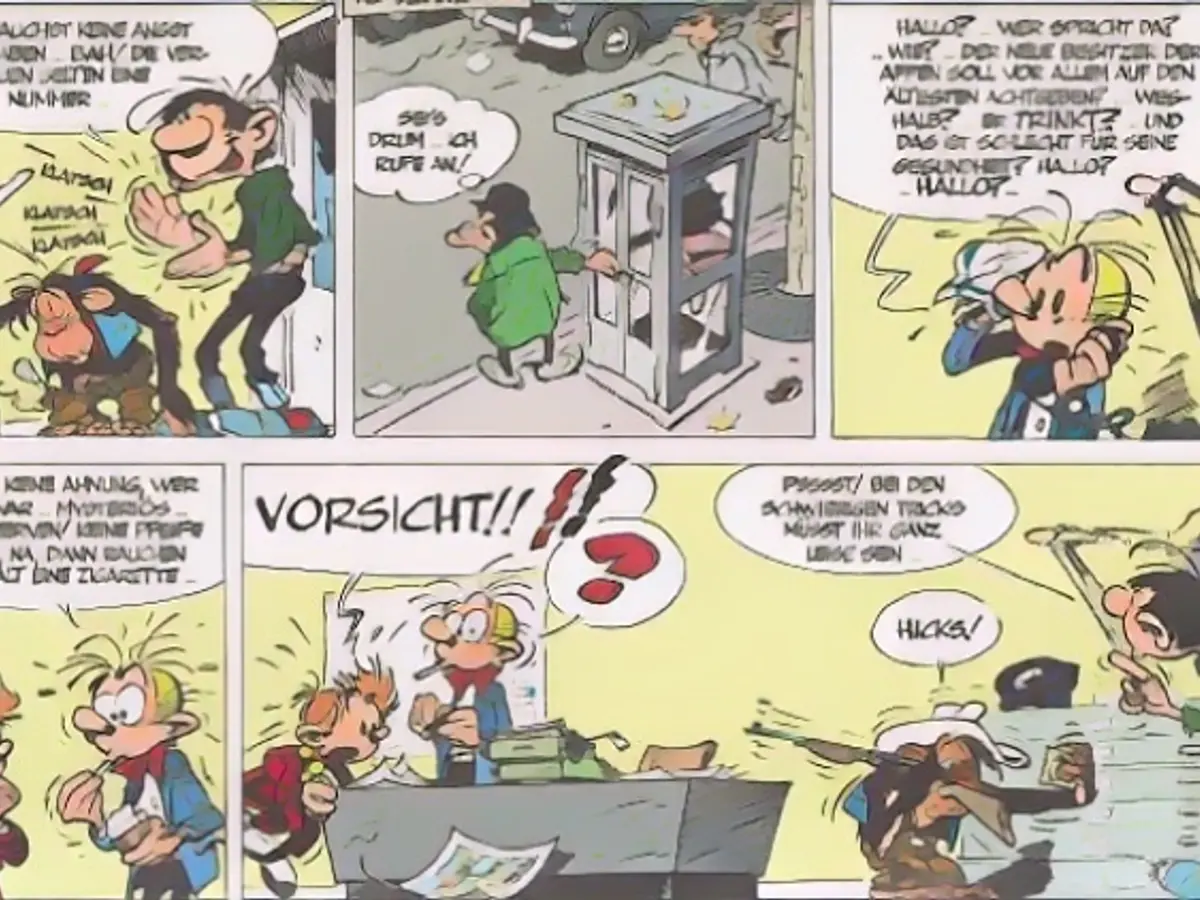
To mark Franquin's 100th birthday, Carlsen publishers are bringing out a "Spirou" story as a deluxe edition with an extensive appendix: "The Bravo Brothers" is like a culmination of everything that makes up Franquin's genius. The 22-page story is quickly told: Office assistant Gaston gives Fantasio three trained circus monkeys for his birthday. Those familiar with the series know how this must end: in utter chaos.
Breakdown and depression
It's wonderful to see how the monkeys tear the office apart with verve, just like Fantasio's nervous system. And how Gaston calmly pours more and more oil on the fire, while Spirou desperately tries to restore order. Franquin has the animals perform their tricks in great detail, as artists and marksmen, knife throwers and jugglers. And he adds more and more characters - the supervisor Demel, the businessman Bruchmüller or constable Knüsel - who are inevitably drawn into the chaos.

Unlike the album-length "Spirou and Fantasio" adventures developed by Franquin, this story is set in the Gaston universe and its gag density is also based on his solo adventures. So it's all the nicer that the three comic heroes come together here. Unlike Spirou and Fantasio, Franquin invented the anti-hero Gaston himself in 1957, creating what is probably the most beautiful satire of modern office life - incidentally, the title character works for the publisher Dupuis in the original, and for Carlsen in Germany.
The other famous character Franquin created is the Marsupilami, a mostly black and yellow fantasy animal from the jungle with a tail up to eight meters long. This gimmick offers countless drawing opportunities (and challenges) as well as providing the basis for countless gags. Once captured and released by Spirou and Fantasio, the Marsupilami voluntarily returned to them - and was often part of their adventures from 1952 onwards, at least as long as Franquin drew them.
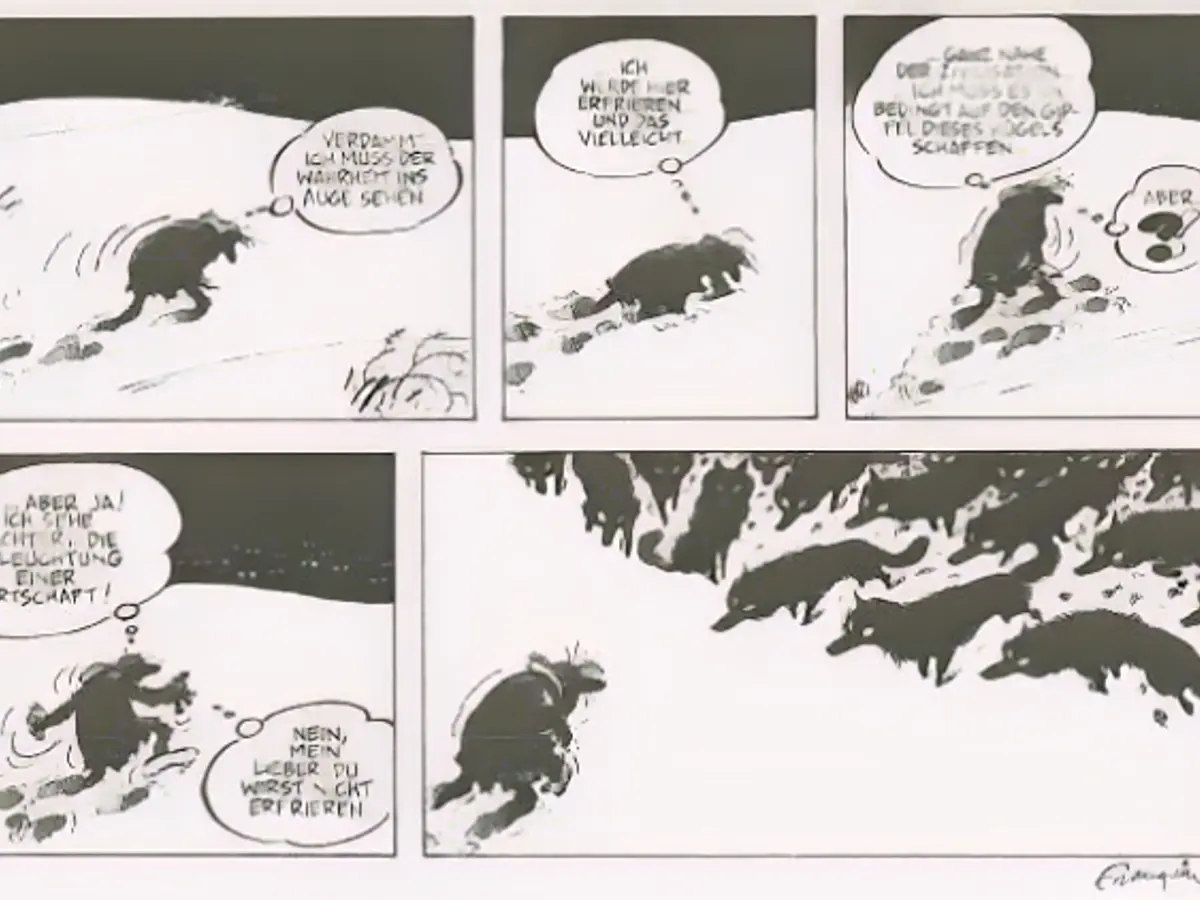
As the illustrator of the "Spirou and Fantasio" stories and the half-page and later full-page "Gaston" strips in "Spirou" magazine, Franquin reached the peak of his skills at the end of the 1950s - it was a golden age for European comic art (1959 also saw the first appearance of "Asterix"). However, the fact that Franquin also occasionally drew for the rival magazine "Tintin" increased the already immense pressure. At the end of 1961, Franquin collapses, suffers severe depression and jaundice. He only continued working on "Spirou and Fantasio" two years later, but gave up the series at the end of the 1960s. However, he retained the rights to Gaston and the Marsupilami, whose adventures he continued to draw.
Bitter conclusion to human existence
However, Franquin once again became a style-defining artist: "Black Thoughts", created from 1977 onwards under the impression of persistent depression, is a collection of bitterly evil black and white comic strips in which he sarcastically confronts humanity. Where Spirou always stands for the good in people, here Franquin dissects a selfish, self-destructive and ignorant society, taking aim at militarism as well as cruelty to animals and environmental destruction. In one of the strips, for example, an exhausted hiker is delighted when he finally sees lights in the distance - which turn out not to be illuminated houses, but the gleaming eyes of a pack of wolves. A bitter conclusion to human existence.
"It's like a soot-smeared Gaston," Franquin himself said about the strips. Just as he always saw himself in the chaotic office messenger, the "Black Thoughts" reveal his other, darker side. The fact that he published them anyway can be understood in the context of a new wave of comics from the end of the 1960s, characterized by socially critical works for adults and new, alternative distribution channels. Franquin, the master of the classic comic book, took his anarchic humor à la Gaston to the extreme.
It was also Gaston that Franquin continued until 1991, before he put down his pencil completely. He had already worked in an advisory capacity on the series "The Adventures of the Marsupilami", which appeared from 1987, and was involved in the development of several other comic series and characters. But for years he was barely able to work due to severe depression. Franquin died in Nice on the night of January 4-5, 1997, shortly after his 73rd birthday.
By then, he had long been recognized as one of the most important comic authors and had also received awards. More importantly, however, the "Spirou" universe he developed lives on to this day, both as an ongoing series and in special volumes by various artists, including the groundbreaking volumes by Émile Bravo about Spirou during the Second World War and "Spirou in Berlin" by German illustrator Flix. The latter also recently published a Marsupilami adventure with "The Humboldt Animal". Only Gaston did not experience any new adventures for a long time - that was Franquin's order. Only since Dupuis took over the rights in 2014 has he appeared again in new comic adventures.
The publisher Carlsen is celebrating Franquin's 100th birthday with various publications. The deluxe edition "The Bravo Brothers" and a five-volume "Gaston" edition in Italian landscape format stand out. Anniversary editions of Gaston and the Marsupilami and a new edition of "Black Thoughts" will follow in the coming weeks. The comprehensive retrospective "Franquin - Master of Humor" was published in 2017.
Read also:
- "You can't beat the whole world"
- The invisible researchers of the polio vaccine
- The woman who dances with death
- We all have someone on our conscience
The fans of Franquin's comics often share their positive reviews online, praising his unique style and hilarious storylines. His comic "Black Thoughts" has sparked many discussions among readers due to its bitter commentary on human existence and society.
In the Flemish comic series "Lucky Luke," created by Morris, another prominent Belgian comic artist, Franquin's character, the Marsupilami, often makes an appearance. Morris and Franquin were almost the same age and were both part of the Marcinelle School.
Source: www.ntv.de

